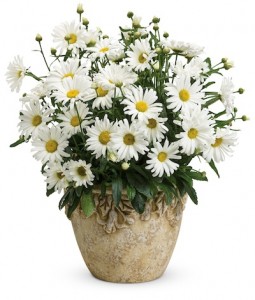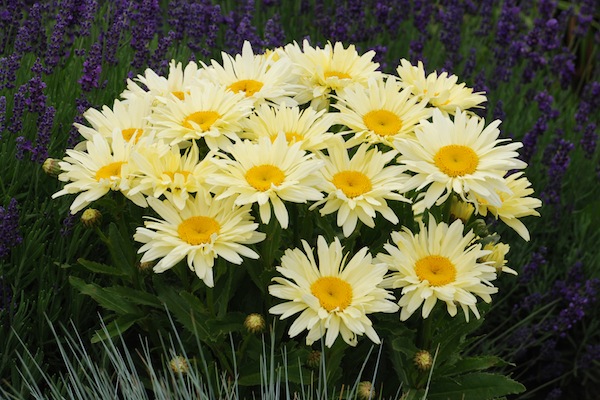Shasta daisies come and go, but two in my garden look like they have staying power.
Famous horticulturist and plant breeder Luther Burbank named the shasta (Leucanthemum) in honor of California’s Shasta Mountain. Most shastas bloom for brief periods, but a few varieties provide a show all summer.
First up is ‘Banana Cream,’ a lovely 2010 introduction from Walters Gardens, a Michigan plant breeder. The 4-inch wide flowers open lemony yellow and fade to a buttery yellow as they age. The stems are very sturdy, keeping the plant upright.
This spring- to fall-blooming perennial gets about 24 inches tall and 18 inches wide. It does best with six or more hours of direct sun a day in average soil. In my garden, it seems to be disease resistant, although some bug made tiny holes in the leaves this spring.
‘Banana Cream’ has low to average water needs, although most plast do best with adequate moisture when flowering. Deadheading — removing the spent flowers — encourages more blooms for a longer period.

Grow Daisy May in a pot for summer enjoyment then transplant to the ground in fall. Photo courtesy Proven Winners
The flowers last for two weeks or more when cut for indoor arrangments. ‘Banana Cream’ is widely available at area garden centers and on-line retailers.
Introduced in 2011 is Proven Winners’ new shasta, marketed as Daisy May. About 24 inches tall and 14 inches wide, it is a strong, upright, long blooming perennial with many 3-inch wide, pure white flowers. Plant in full sun and water regularly. Deadheading keeps it blooming longer. This may be a bit harder to find this season, but Daisy May should be plentiful next year.
Besides the freshness daisies add to the landscape, the greatest impact comes when they are planted in clumps of three or more plants or in drifts. The long bloom period of these two daisies makes them ideal companions with summer annuals.
